Scientists recruit bloodsucking leeches as research assistants
Leeches can turn up evidence of animals that camera traps may miss
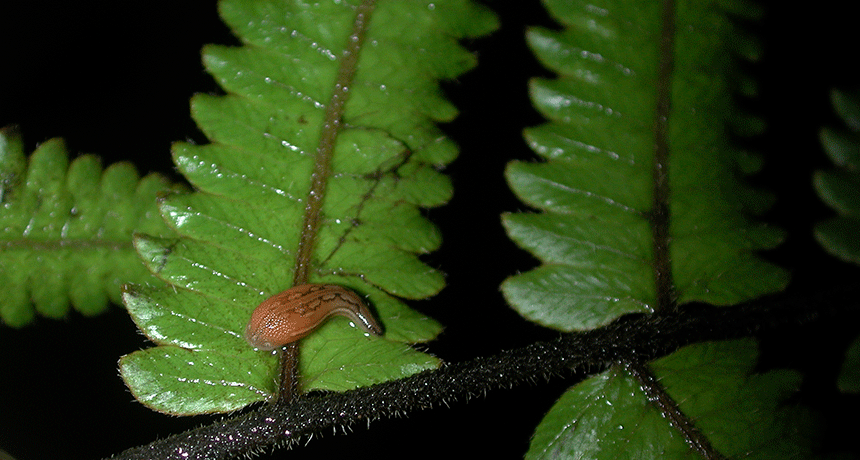
Here’s a tropical “research assistant” belonging to the genus Haemadipsa.
© AMNH/M. Siddall
By Yao-Hua Law
You might mistake a leech for a somewhat fat, flattened earthworm. But soft, slimy leeches have a very different lifestyle and diet. They eat all or parts of other animals, instead of dirt and the matter within. And many feed on the blood of their hosts, which can include people. That bloodsucking action might aid science. It could highlight which species share a leech’s habitat. Scientists can even use leeches to find hard-to-spot animals that need protection, new research indicates.
Every living thing has a unique set of genetic instructions locked into its DNA. While that DNA may make each individual look and behave somewhat differently, the DNA from every member of a species will all look fairly similar to others of its kind. Scientists can make use of that similarity to identify an organism’s species by its DNA.
When a leech feeds on some bigger animal, it picks up some of its host’s DNA. That DNA accompanies the host’s blood into the leech’s gut. In this way, the gut becomes somewhat of a record book of the species on which that leech had recently dined. With the right equipment and skills, scientists can pick out DNA from the leech’s gut, study it — and then figure out which animals that genetic material had come from.
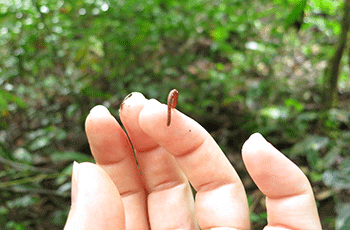
Why bother?
Many animals that scientists care about are cryptic. That means they are hard to see. They may hide out in trees, under bushes or in shallow streams. Because leeches inhabit many of the same places, analyzing their diet can be one way to “see” animals that try hard not to be seen by people and other potential predators or prey.
Nearly 20 years ago, scientists tried to get around this problem of cryptic animals by attaching motion-activated cameras to trees. The tactic worked. Some of these first camera traps, dating to 1999, turned up the very shy — and rare — Javan rhinoceros in Vietnam. People had long thought it was extinct there.
A camera trap consists of a camera fitted with a sensor that detects movement. And they are now common. (People even install them in their backyards to see what visits.) When something — hopefully an animal — passes by, the sensor triggers the camera to snap a photo.
Although easy to use, camera traps can be expensive, damaged or stolen. They have to be placed in just the right spot to catch rare visitors. Extreme rain, cold or heat can take a camera out. And most cameras require that someone stop by frequently to retrieve the camera or its data to look for evidence of some rare quarry.
While camera traps can be handy, leeches can be better at scouting some cryptic forest dwellers, a new study found. Sarah Weiskopf, a wildlife biologist, led the study. It was part of her graduate research at the University of Delaware in Newark. Her group described its findings online February 19 in the Journal of Applied Ecology.
What they did
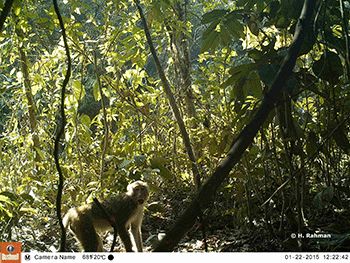
Weiskopf worked with a scientist who had used camera traps in South Asia to study animals in the forests of Bangladesh. They now set forth to test how well leeches might compare. To do that, her group collected 200 leeches at 16 sites near the camera traps. It took four days to get the leeches, most of that time spent hiking to the sites.
Collecting 200 leeches is much easier than it sounds. “When you walk around in the forest, you see them crawling on the ground,” Weiskopf says. “And they come toward you because they want to find a meal. We just pick them up from branches, the ground or wherever you see them.” Her team then plopped each little bloodsucker in its own test tube and carried them all home to her lab.
Weiskopf found traces of blood from 12 mammal species inside the leeches’ guts. If she had used 16 camera-traps instead, she would have needed about 6 nights of data to reach the same animal count. So leeches, she says, seem to be a faster way to survey for animals.
“In Bangladesh, we had camera traps out for 10 months,” says Weiskopf. Some were stolen. A few others didn’t work. This survey technique can therefore be expensive and time consuming — and still yield no data. In contrast, she says, “With leeches, we could collect them very quickly. And you don’t have to worry about getting the leeches stolen.”
Weiskopf also took part in a second new study. It examined some 750 leeches from forests in Bangladesh and two other Asian countries, China and Cambodia. The leeches’ guts contained DNA from birds and many mammals. These included bats and the gaur (Bos gaurus). A gaur looks like an ox and is the largest of all wild cattle. Gaurs are considered a species at some risk of extinction. This means there will be fewer gaurs in the wild if they are not protected.
The scientists shared their findings from this study online February 22 in the journal Systematics and Biodiversity.
Why leeches won’t replace camera traps
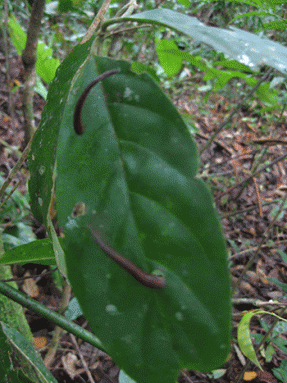
That second study confirms that leeches can be used to find a variety of species, including some that may not even yet be known. However, leeches and camera traps point to slightly different sets of animals.
In the first study, camera traps snapped photos of Asiatic golden cats (Pardofelis temminckii) and leopard cats (Prionailurus bengalensis). Leech blood showed no evidence of either.
Leeches did turn up evidence of Asian rats (Rattus tanezumi), which were missing from the camera traps, as well as more of one species of monkey. Leeches, therefore, may help spot more smaller mammals than camera traps will, Weiskopf now suspects.
The difference in what the leeches and cameras find might have something to do with height.
Researchers place their cameras above the forest floor, often along paths where a target species might be expected to pass. The height appropriate for identifying a big cat may be too high for finding small animals, such as rodents. Even at the right height, the sensors on the camera might not be sensitive enough to detect a small animal moving by.
Leeches, however, are attracted to animals of all sizes, including ones too small for camera traps to spy. So each survey approach may work best for a particular set of species.
Jedediah Brodie agrees. He works at the University of Montana, in Missoula, and did not take part in the new study.
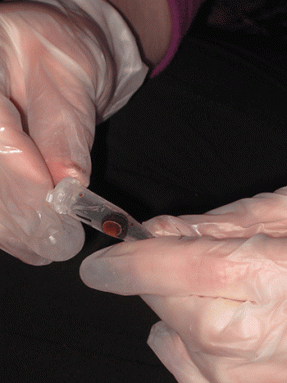
He uses camera traps to study animals in the jungles of Borneo in Southeast Asia. Still, this wildlife biologist notes, leeches certainly can be a powerful tool to survey animals in tropical Asia. And, it “could be even more powerful if we knew how far leeches traveled throughout the forest,” says Brodie. “That would give us an idea of where the mammals, which the leeches fed on, were.”
Dusit Ngoprasert is a conservation ecologist in Bangkok, Thailand. He works at King Mongkut’s University of Technology Thonburi. He uses camera traps to study animals in Southeast Asia. And based on his work, Ngoprasert has some doubts about how useful leeches might be to survey cryptic animals.
In Southeast Asia, analyzing DNA still is not cheap, he notes. What’s more, camera traps can give more information than just the presence of an animal. For instance, they may point to the number of animals in a group and how they behave. Camera traps also can snap photographs of people hunting or logging illegally at protected sites.
Weiskopf, too, thinks camera traps still have a role. She just thinks leeches are a good complement to them.
So, there may yet come a day when scientists walking in tropical forests will smile at the sight of leeches crawling toward them.







